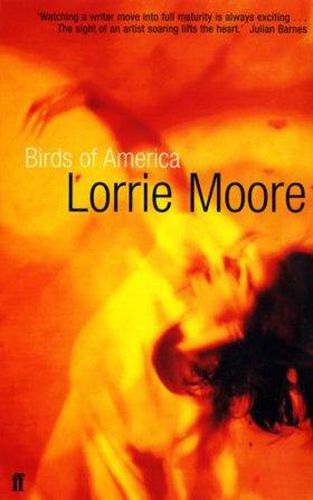Laura Jean McKay on Lorrie Moore's Birds of America
Reading Lorrie Moore for the second time is a different experience to reading her for the first. Not just because of that extra skin of insight, though there’s that. Once you know Moore, you also know that she’s very likely to wreak havoc on the lives of her characters: a woman who is holding a baby one minute will fall off a picnic bench and kill it the next; a ghost in a roof will turn out to be an attic-squatting teenager; a country court judge will reveal that she is having an affair ‘with a man who is not dyslexic, and once in a while, Jesus Christ, she needs that’.
I re-read Birds of America white-knuckled, resenting anything and anyone who took me away from the stories. Moore’s prose is exquisite and she is duly praised for it. Critics call her Chekhovian. But what grabs and holds me is that Moore is funny. Extraordinarily funny. And she doesn’t make jokes, she puns. Like her similes and some of her characters, Moore pushes her wordplays over the cliff and waves them down so that the lives of her protagonists become as tragic as a dad joke at a funeral – summoning the sort of hysterical relief that is part guffaw, part sob. I don’t read for humour, but I do read for beauty and horror and Moore is all that: she quips and in the next line she’ll rip out your heart.
Scattered through the story ‘Community Life’, for example, are Tom Swifties – puns that are made through dialogue: ‘This hot dog’s awful, she said frankly’; ‘She’s a real dog, he said cattily’; ‘I like a good sled dog, she said huskily’. Just as you have finished snorting at ‘Would you like a soda? he asked spritely,’ Moore brings in another refrain, ‘She missed her mother the most,’ a reference to the double death by car crash of the narrator’s parents. In the collection’s most infamous story, ‘People Like That Are the Only People Here’, about a baby’s cancer diagnosis, Moore writes:
Now, suddenly, alternative medicine seems the wacko maiden aunt to the Nice Big Daddy of Conventional Treatment. How quickly the old girl faints and gives way, leaves one just standing there. Chemo? Of course: chemo! Why by all means: chemo. Absolutely! Chemo!
For the serious Antipodean writer, this can be a surprise: are you allowed to write a funny short-story collection about failing relationships, sick babies and cancer?
Some still say ‘no’, and Moore’s style often falls on unamused ears. Adam Mars-Jones, reviewing her collected works (of which Birds of America is included) in the Guardian, complains that ‘most of the outgrowths on Moore’s prose, begging to be sanded down, are wisecracks, puns and jokes’. Later he writes, ‘It’s a bad bargain because she cheats herself and her readers of something that had a real chance of being original and fierce.’ In this thinking, a writer can’t be ‘original’, ‘fierce’ and funny. But Moore’s work is all of that. What to do?
I’ve tried and failed to pinpoint other writers who tap at the funny bone quite like Moore. David Sedaris is marvellously comic, but he doesn’t drop one-liners like Moore in her story ‘What You Want to Do Fine’ with ‘It wasn’t true what they said about bees. They were not all that busy.’ And George Saunders’ hilarious stories seem to be told from the distance of some future time. Oddly, Moore’s style reminds me most of Jacques Lacan’s, that fiercely original psychiatrist famous for slapping the back of his psychoanalytic discourse with wordplay and puns. Of course, I never actually get Lacan’s gags, but Moore’s puns, utterly getable, are as astounding in serious literary fiction as an analyst who makes jokes. It’s as though Moore is winking at you through the text, hissing, ‘It’s not true! It’s a story!’
The stories in Birds of America flock together, a collection flying in formation. But Moore, who will release a new collection, Bark, this month, describes them merely as a round-up. The title is from John James Audubon’s The Birds of America, a man in the habit of killing birds before he painted them – so that they would stay still, one supposes. In a similar way, Moore pins her art to the wall and takes pot shots at it, inviting the reader to do the same, just as the narrator in ‘Dance in America’ instructs her young students that dance is ‘the purest metaphor of tribe and self. It’s life flipping death the bird. I make this stuff up.’
Lorrie Moore plays, but not with us. She seems to subscribe wholeheartedly to one of Kurt Vonnegut’s tips on writing a good story: that every character should have ‘awful things happen to them – in order that the reader may see what they are made of’. In Birds of America, we are page by page faced with painfully witty revelations: about the characters, about ourselves, and about events that we might not have been brave enough, or had the humour, to confront. As a doctor tells a cancer patient in the story ‘Real Estate’, ‘“The only way to know absolutely everything in life is via an autopsy.”’
Laura Jean McKay is the author of



